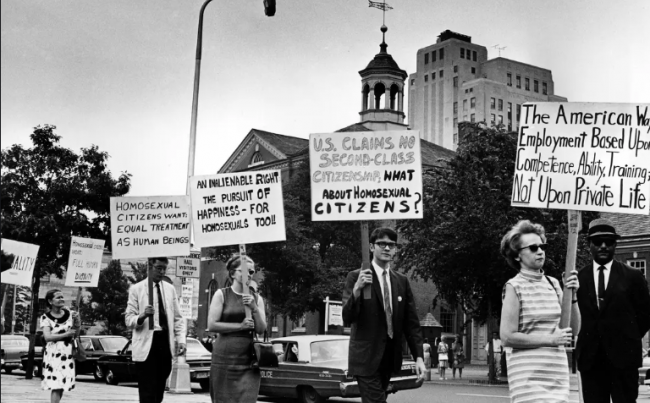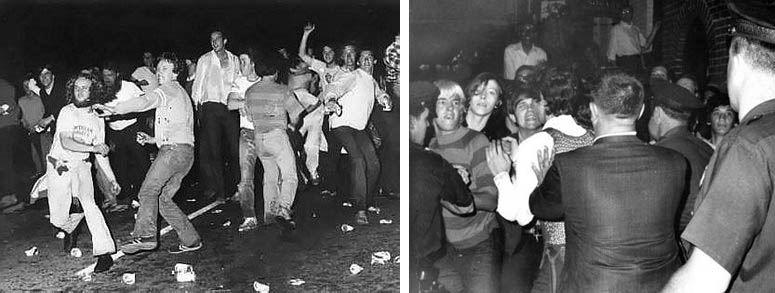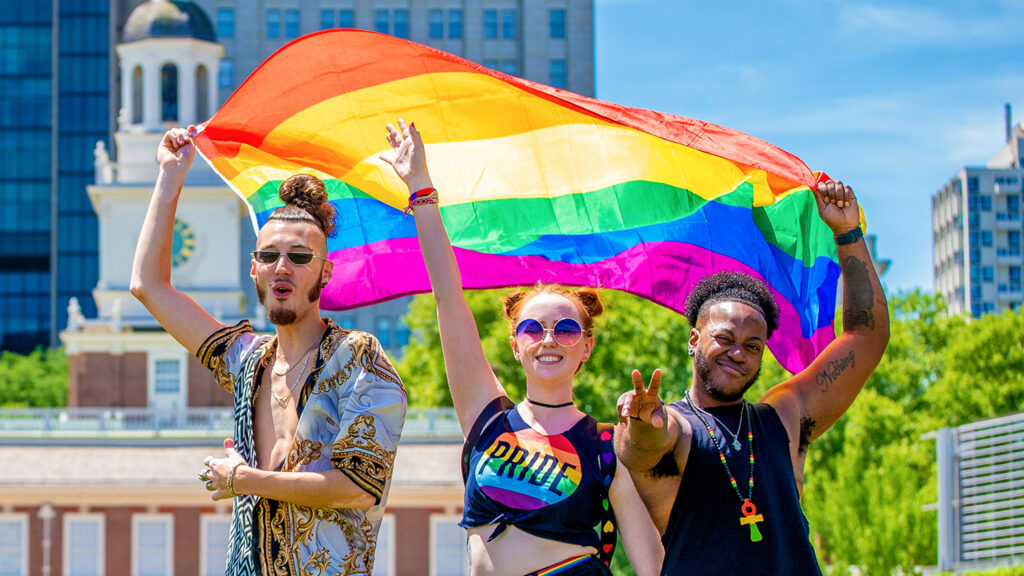
Many people associate the Stonewall Riots as being the true beginning of LGBTQ+ protesting. These violent riots were subject to a great deal of media coverage, so it is understandable why Stonewall is the first thing people think about when talking about protesting for gay rights. In reality, it wouldn’t be fair to say that these riots were the spark to the flame of LGBTQ+ protesting. Four years before the riots at Stonewall happened, gay rights activists were protesting for the rights of their community at the Annual Reminder marches in the city of Philadelphia.
The History
The Annual Reminder marches occurred every year from 1965 to 1969 on July 4th. They were held by the East Coast Homophile Organization (ECHO) and mainly organized by Frank Kameny and Barbra Gittings, the father and mother of the LGBTQ+ Civil Rights Movement. The picketers, known as the Annual Reminders, were a group of gay and lesbian activists from Washington D.C., New York, and Philadelphia. They marched in front of Independence Hall and the Liberty Bell in Philadelphia, Pennsylvania, and during the city’s annual Independence Day parade. The time and place of these marches were very significant to the message of the march.
On July 4th, 1776 in the Assembly Room of the Pennsylvania State House, now known as Independence Hall, the Declaration of Independence was adopted and signed later that year. In the Declaration of Independence, it states that, “… all men are created equal, that they are endowed by their Creator with certain unalienable rights, among these are Life, Liberty, and the pursuit of Happiness” (National Archives and Records Administration). The Annual Reminders wanted to act as “reminders” to everyone that not all citizens in the United States was entitled to the same rights that were listed in the Declaration of Independence. They continued to go out and remind everyone of this message year after year at two of the most symbolic places for freedom in the country.
The Rules

When it came to being an Annual Reminder, there were strict rules that they had to follow in order to protest. One of the most notable rules of these demonstrations was the strict dress code. The protesters were told to dress professionally; men were to wear ties and jackets and women were to wear dresses. During this time, people who were a part of the LGBTQ+ community could not work government jobs. To send employers a message, the Annual Reminders were told to dress employable.
It was important for the demonstrators to dress like every other American because it showed others that they were the same as everyone else. Another reason for the dress code was to prevent any distractions that would take away from their message. This strategy was not unique to the march because it was a popular tactic used in the Civil Rights Movement first. Kameny, who was known for taking tactics from civil rights leaders, wanted the Reminders to imitate the same tactic of “using respectability as a political tool” because of how well it worked for civil rights demonstrators.
Besides the dress code, there were other strict protocols they had to follow. Unlike most of the gay rights demonstrations that have happened, the picketers were to walk in a single file line. While in line, protesters were not allowed to engage with people who passed by or said anything to them. They had to keep the conversations they had with other protestors to a minimum to ensure professionalism. They could not smoke or drink in the line as well as leave unless it was absolutely necessary to. The signs that the picketers carried had to be approved in advance to march. If they were approved, they had to be neat with clear letters.
The Stonewall Riots

The Annual Reminder marches were seen as very effective and the first of its kind, but everything changed after the events that took place at Stonewall.
The Stonewall Riots, also known as the Stonewall Uprising, happened on June 28th, 1969 when New York City police raided a gay club called the Stonewall Inn. The raid eventually broke out in a riot involving the neighborhood residents and bar customers. These events led to a six day protest on Christopher Street. These protests were drastically different to the Annual Reminder marches because they were more focused on the liberation of the LGBTQ+ community rather than fighting for equality.
In 1969, the Stonewall Riots sparked an increase in participants for the Annual Reminders march that year. These new protestors were not in favor of how the demonstrations were run. They thought they were not bold enough to make an impression on anyone. The thing they found the most annoying about the protests was the strict dress code it enforced on people. Because of their dislike for the rules, they eventually began to disobey them by holding hands with each other, walking side by side, and talking to people outside the line and to each other. The new protestors’ disregard for the rules eventually phased out the Annual Reminder Marches all together.
The fall of the Annual Reminder marches paved the way for new kinds of LGBTQ+ demonstrations. The Christopher Street Pride parade was born on June 28th, 1970, and it took a more confrontational approach to protesting. Attendees would dance wildly and create chants to scream to. People were allowed to wear whatever they desired and hold signs that were not pre-approved, unlike like the Annual Reminder Marches. They also promoted heavy drug use at these parades, which the Annual Reminders would heavily discourage.
The Significance To Philadelphia

The city of Philadelphia should be proud that this history happened on its own soil. Brave lesbian and gay activists gathered in Philadelphia, specifically Independence Hall and the Liberty Bell, to protest for equal rights for LGBTQ+ individuals. As the city of “brotherly love,” citizens should get excited that this was the start of people protesting for the LGBTQ+ community’s right to love. LGBTQ+ Philadelphians, especially, should feel a sense of pride in their city because of this historical event. Their fellow community members had the courage to fight for their rights and the rights of others in their very own city. As someone who currently lives in Philadelphia, I wish I was able to learn about these marches growing up. Because of my close connection to the LGBTQ+ community, I feel as if the Annual Reminder marches as a topic in learning environments would benefit everyone greatly. These marches make me feel proud to live and go to school in Philadelphia and I wish more people felt this way.
A Future For LGBTQ+ Demonstrations

The Annual Reminder marches have made protesting possible for future LGBTQ+ demonstrations like the Stonewall Riots. The Annual Reminder marches humanized members of the LGBTQ+ community and showed Americans that they should have the same rights of every other citizen. Even though these marches were phased out by new protestors, it gave these protestors a stable platform to use their voice. A new age of protesting has brought forth a great sense of love and pride within this community. Without these marches, it can be argued that other demonstrations would not have thrived the way they have.